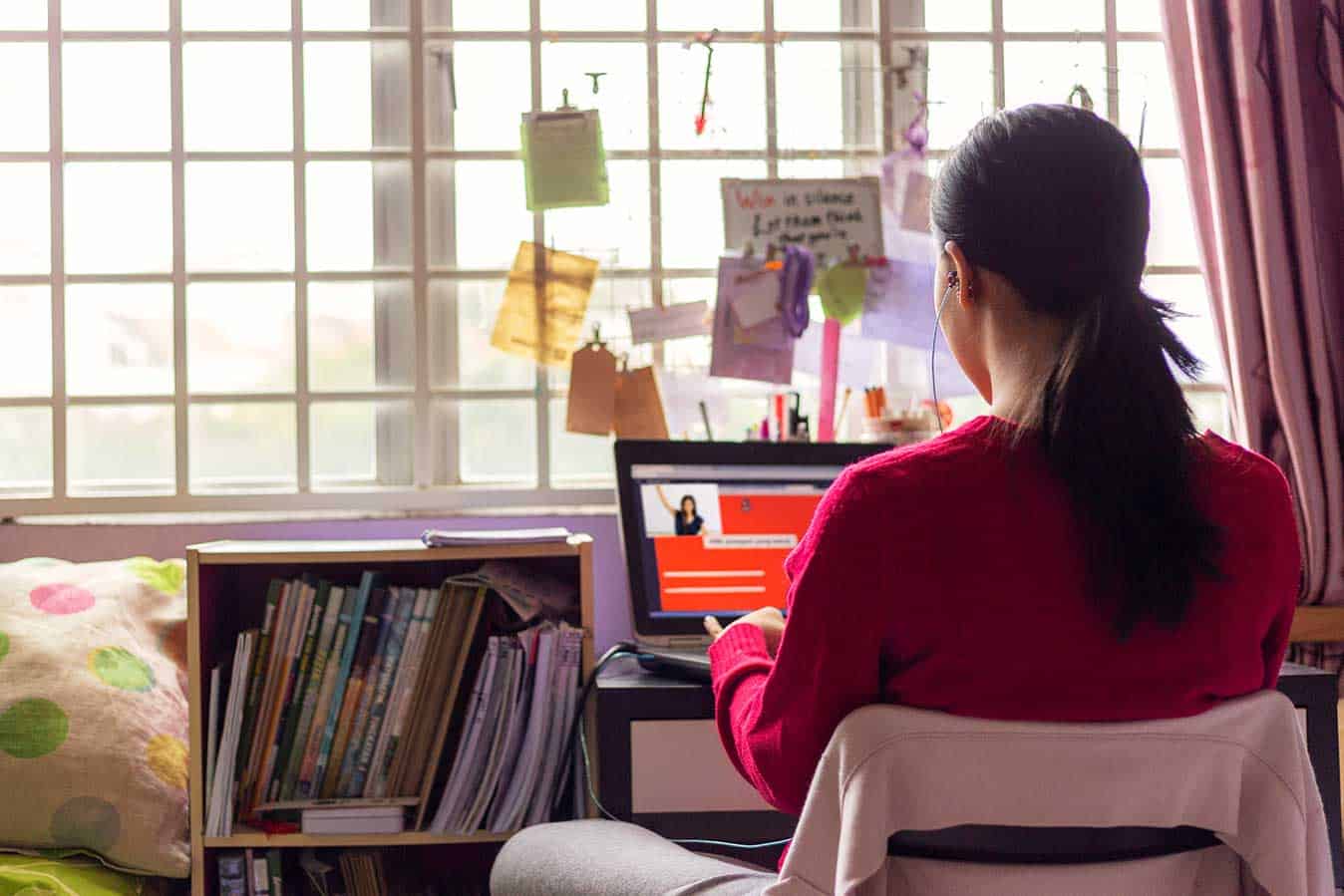In early 2020, many Australian universities rapidly shifted their classes online in the wake of the COVID-19 pandemic.
For second-year La Trobe University (Bendigo Campus) nursing and midwifery student Klodi Ward, the transition from face-to-face learning to online lectures and studying remotely required having to adapt to a “new normal” and finding new ways to engage.
At La Trobe, nursing and midwifery students completed an intensive learning block before the start of the first semester in March to give students enough time to navigate their varying clinical placement schedules.
“The pandemic started to affect most of us during our [clinical] placements and while we were trying to complete our remaining take-home assessments,” Klodi recalls.
“There was a lot of uncertainty in this time as we weren’t sure if our placements would continue and how the placements would change if a lockdown were to happen. It was an anxious time not only for the healthcare workers but the students as well.”
With second semester fast approaching and the pandemic intensifying in Victoria, Klodi and her classmates quickly adjusted to learning and studying online from home.

“Initially, the learning was quite awkward as our lecturers became familiar with the new style of interaction and we became accustomed to staring at our screens for a long period of the day,” she explains.
“We still had set hours for live lectures but more flexibility in our schedules for pre-recorded learning material.”
Klodi welcomed the new structure of learning.
“The pre-recorded lectures were a blessing because we could take our time to take in-depth notes if we chose, or increase the speed on content we grasped easily. The live zoom meetings were a great way to consolidate the pre-work and ask our lecturers any questions.”
While Klodi ultimately thrived learning remotely, she acknowledges that many of her classmates struggled with the challenges of studying from home, mainly because they didn’t have a quiet space to work, a functioning laptop or experienced slow internet.
The move to online learning demanded self-motivation, improved time-management and more targeted planning to complete course work, she adds.
Fortunately, Klodi’s clinical placements went ahead throughout the pandemic. But some of her classmates had theirs postponed as hospitals tried to contain the spread of the virus.
The shift to online learning became more challenging as exams approached, she suggests.
“In 2019, students were able to meet in person with lecturers and raise any concerns about their revision for exams. This was adapted to online zoom meetings, which was a first for my cohort and very strange at first.”
Klodi lists the lack of access to learning materials as the most challenging part of studying remotely amid the pandemic.
“Usually I am someone that would utilise the library most weekdays while studying,” she says.
“That was quite convenient in first-year and the beginning of second-year while living on campus. However, the pandemic forced me to return home for a few months during the first lockdown. This alone was a big shift from living independently to living with my partner’s family. Additionally, my workspace dramatically changed. That was a big hurdle for me to overcome.”
While learning remotely offered greater flexibility in some ways, Klodi admits it challenged her commitment and resolve.
“For a lot of people, including myself, it really tested my passion for my degree. I strongly believe that if I wasn’t as intrigued by the content and invested in my desire to one day become a midwife, I would have really struggled to continue this year [2020].”
Most Australian universities who pivoted amid the COVID-19 pandemic will look to return to face-to-face learning if possible in 2021 but nobody knows what’s around the corner.
Klodi shared her top 5 tips for nurses and midwives studying remotely that she discovered during the unprecedented year.
- Plan out your semester
when are your assignments due? What are your lecturers’ emails? Have you done the first week’s paperwork? When do your live lectures run? These are all things you should be looking over in the couple of weeks before you start to ensure you’re getting the best start to the semester.
- Put everything in a diary
It is super easy to forget about a lecture or assignment if you haven’t gotten it scheduled in a diary or calendar of some sort. The university usually gives out diaries at the start of the year for free. Take advantage of this! This will also help you keep track of your personal commitments outside of university. Personally, I like to put the date that I will start an assignment, the date I should be halfway finished and the date I should be finished. Ideally, I like to put the date I will have it finished a week before it’s actually due so that if it’s not quite there yet I still have one week of wriggle room to get it submitted on time.
- Use a study planner or make your own
In my first year this was the most helpful thing for me when adjusting to adult learning. At university, most degrees will not have eight hours of planned face-to-face or live classes. This leaves a lot of hours of the day for study. But, if you don’t schedule it in, then it can be easy not to use that time efficiently (did someone say Netflix?).
Planning out most of your day hour-by-hour can really help keep you on track and get the most out of your study time. Personally, I work best from 8 am to 3 pm, so I know that procrastinating my study until 7 pm at night isn’t going to work for me. My study planner might look something like this:
MONDAY
7–8 am – Eat breakfast, pack bag, set up desk
8–9 am – Pre-work for Class A
9–10 am – Pre-work for Class B
10–11 am – Class A live lecture
11 am-12 pm – Class A live lecture (continued)
1 pm-2 pm – Lunch break
2–3 pm – Class B live lecture
3–10 pm – Wash hair, grocery shop, fill up on chocolate before dinner, cook dinner, Netflix, sleep.
- Ensure you’ve got all the tools you need to study
This includes a quiet space, internet, your textbooks, laptop, snacks, water and a well-rested brain. Setting up a space for study can really help you get into a productive headspace. This is something that I struggled with while studying remotely initially. I found that I was far more productive working at a desk without my phone next to me than studying in my bed.
- Be involved!
Ask your lecturers questions when you’re not sure about something. Communicate with your classmates in the breakout rooms. Consolidate your own learning by teaching someone else in the breakout rooms. As tempting as it is to have your camera and microphone off while scrolling social media; don’t. By actively participating in online learning, you will be more alert during the live zooms and get the most out of your time with the lectures.








